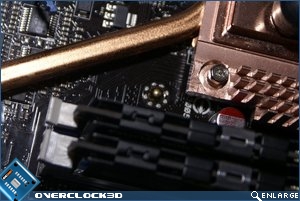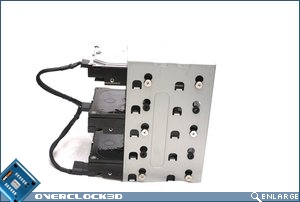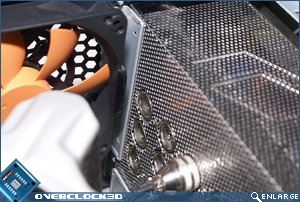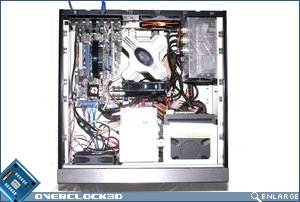Thermaltake DH 104
Test Setup
Â
For testing we wanted to replicate a fairly high-end HTPC, one that was capable of modest gaming. If you’re a regular to the site you will know that the 4830 is currently our favourite mid-range card, so one of those was on our list. Although the rest of the system may be a little overkill for watching hi-def videos, it means the DH 104 was pushed further than it normally would, which will hopefully highlight any faults.
Â
The full specs are as follows:
Â
Q6600 ‘G0’ @ stock
Cooler Master Z600 Cooler
4GB Crucial Ballistix
Asus Maximus Formula
Raptor X 150GB x2 ‘boot drives’
250GB Seagate 7200.0 ‘media drive’
HIS Radeon 4830 512MB
X-Fii Extreme Gamer sound card
LGÂ DVD-Ram drive
Cooler Master Z600 Cooler
4GB Crucial Ballistix
Asus Maximus Formula
Raptor X 150GB x2 ‘boot drives’
250GB Seagate 7200.0 ‘media drive’
HIS Radeon 4830 512MB
X-Fii Extreme Gamer sound card
LGÂ DVD-Ram drive
Â
As you can see, it wasn’t going to be easy for the DH 104 to cope with the heat generated by the system chosen. We also chose to include a high-end cooler, which would allow lower fan speeds so we could determine how much noise was being generated by the case fans.
Â
Â
Â
Installation
Â
Installation seemed to go well; all the components fit well and there were a few nifty features that really aided the build time.
Â
Â
At first we thought something had gone wrong when the stand-off was made. However, once we got around to installing the motherboard, all was revealed. The stud goes in the centre of the motherboard and holds it in place. Installing a motherboard usually involves trying to hold it in place, holding a screw driver, lining up the screw and trying to screw them in all at the same time. The stud simply holds the board in place, freeing up your hands… Well done Thermaltake!
Â
Â
Next up, we installed our hard disks in the rack. We decided to space them out as much as possible, so that they wouldn’t bake each other. However, once we put the cage back into the case it became apparent that there was insufficient space to use the slot. The bottom slot in the cage means the disk is right next to the motherboard. The 24 pin ATX connector on our board was directly below the drive, blocking off the power connector. Since the placing of the ATX connector isn’t exactly unique, this is perhaps something Thermaltake needs to look at.
Â
Â
The final problem we encountered is almost unique to our PSU, but is still worth noting for readers who may have the same PSU. The 120mm fan overhangs underneath the PSU, meaning we couldn’t install in the final row of modular ports on our PSU. To rectify this, we had to remove the bracket on the fan, shortening it by about a centimeter. This gave us enough clearance to attach the plugs.
Â
Â
Finally, after an hour or so, our PC was ready to be used. The cable management in the DH 104 is pretty poor, and we struggled to make a neat looking system. This will most likely affect the cooling performance of the case, and perhaps something Thermaltake should look at fixing with a few routing holes or similar.







